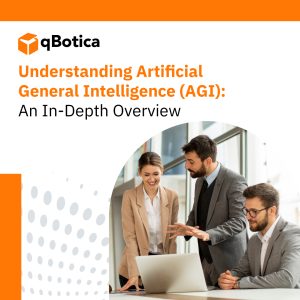The wealth management industry is undergoing a technological revolution. New technologies are disrupting things. What technologies? Artificial intelligence, machine learning, and robotic process automation. These are automating many traditional business models. They’re also changing how investment advisors interact with clients.
This article takes a comprehensive look at key automation technologies transforming wealth management. It also provides practical strategies for implementing these technologies.
The Rise of Automation in Wealth Management
Compared to other financial sectors, wealth management has lagged in technology adoption. But profits are declining. Younger investors want digital experiences. So, wealth managers now rapidly embrace automation. This is to stay competitive and efficient.
A survey found 95% of executives say automation is a priority. Key drivers are:
- Cost reductions by automating manual processes
- Improved advisor productivity and capacity
- Enhanced client experience through digital channels
- Development of data-driven insights and recommendations
Global assets under management will reach $147 trillion by 2025. Automation will be crucial for wealth managers. It will help them handle growing client assets efficiently.
Key Automation Technologies for Wealth Management
Wealth management firms should look at several prominent technologies. These can automate processes and transform the client experience.
1. Robotic Process Automation
First, Robotic Process Automation or RPA. RPA uses software bots to automate repetitive, rules-based tasks. Traditionally, these were done manually. In wealth management, RPA can automate back-office work. This includes trade reconciliation, performance reporting, and monitoring compliance. Using RPA frees up staff. It allows more time for high-value advising. It also cuts costs. According to an estimate, RPA reduces back-office costs by 25-50%. It also boosts productivity by 50-70%.
2. Customer Relationship Management
Next, Customer Relationship Management or CRM systems. CRMs centralize client data and improve customer interactions. This gives advisors a 360-degree client view. It enables personalized, proactive recommendations – tailored to each investor.
Leading CRMs include Salesforce, Microsoft Dynamics, and AdvisorEngine. They use big data and predictive analytics; to generate client insights. Integrating the CRM with other wealth tech is crucial as it allows smooth data flows.
3. Digital Advisory Solutions
Finally, digital advisory solutions or “robo-advisors.” These use algorithms to provide services. The services include automated financial planning, investment recommendations, and portfolio management. This delivers low-cost, personalized advice at scale.
Top robo-advisory firms are Betterment, Wealthfront, and Personal Capital. In 2020, they had over $1 trillion in global AUM. While they compete with human advisors, robo-advisors can also complement human advice.
4. Data Aggregation Tools
Data aggregation tools like ByAllAccounts, Quovo (acquired by Plaid), and Yodlee seamlessly consolidate client account data from thousands of sources. This gives advisors instant access to holistic client financial pictures to identify needs.
Aggregators enable advisors to easily transition clients, monitor portfolio performance, and avoid tedious manual data entry. Application programming interfaces (APIs) allow secure and reliable connections.
5. Cloud Computing Platforms
Cloud platforms provide wealth management firms with flexible access to computing power, storage, and analytics tools without upfront infrastructure costs. The technology enables advisors to access client data and applications from anywhere.
Popular cloud services like AWS, Microsoft Azure, Google Cloud, and Orion Advisor Solutions integrate seamlessly with other wealth tech providers to enable efficient workflows.
Developing an Automation Strategy
Automating too rapidly without a strategy can be counterproductive. Wealth managers should take a phased approach:
1. Identify processes for automation based on feasibility and ROI
Conduct process analysis to map all manual processes and identify the top priorities for automation based on potential efficiency gains, revenue opportunities and cost savings. Start with high-volume repetitive tasks.
2. Select software solutions
Research automation tools for different processes and select the best-fit applications for your organization’s needs and technical environment. Leverage free trials to test products.
3. Start with a pilot program
Roll out automation for a few targeted processes first to demonstrate potential and work out any kinks before scaling. Draw lessons before expanding automation more broadly.
4. Phase rollout and iterate
Gradually implement automation in stages across the organization. Continuously gather feedback, assess impact, and refine both the solutions and integration with legacy systems.
Getting Staff Buy-in for Automation
Lack of organizational change management is a top barrier to successful automation. Wealth managers must get employees on board and assuage any change fears.
Key strategies include:
- Involve staff early in automation planning for input on workflow design and solution evaluation.
- Promote upskilling through training programs to transition staff to new roles and prevent job losses.
- Communicate the benefits of automation clearly, including new revenue opportunities, workplace efficiencies, and more time for advisor-client interactions.
- Incentivize adoption via bonuses or promotions linked to using new technology. Recognize teams and individuals demonstrating excellence in automation.
- Establish change champions throughout the organization to promote automation and provide user support.
Optimizing Workflows
Merely automating existing flawed processes won’t drive impact. Firms must redesign workflows for efficiency. Steps include:
- Document in detail all current workflow steps and information handoffs
- Identify bottlenecks, redundant steps, and opportunities to implement automation
- Eliminate silos between groups through integrated platforms
- Standardize workflows for consistency across the firm
- Continuously gather user feedback to refine workflows
- Provide ongoing training on new workflows for staff adoption
Effective workflow redesign is crucial to maximize the benefits of automation technologies.
Monitoring Outcomes
Ongoing metrics monitoring and reviews ensure wealth managers derive full ROI from automation projects and identify areas for improvement. Key performance indicators to track include:
- Process KPIs: Cycle times, error rates, output volume for automated processes
- Operational KPIs: Cost reductions, productivity gains for staff and advisors
- Business KPIs: Revenue, client satisfaction, advisor capacity
- Technology KPIs: System usability, API uptime and performance
Conclusion
Automation will define the next era of transformation for wealth management as firms leverage artificial intelligence, machine learning, and other emerging technologies to meet changing client expectations.
Incumbents and new fintech disruptors that strategically implement automation will flourish. Those that fail to adapt their outdated processes risk losing out to more agile competitors. This comprehensive playbook provides wealth management leaders with the key considerations and best practices to successfully embark on their automation journeys.
Visit qBotica today to learn how their AI solutions can help your firm maximize efficiency and better serve clients through intelligent automation. The future of wealth management is automated – let qBotica show you how!




